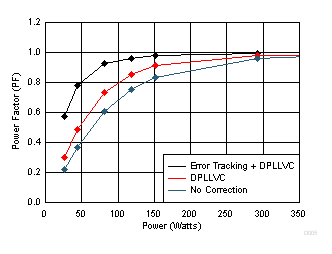TIDUD61E October 2020 – April 2021
- Description
- Resources
- Features
- Applications
- 5
- 1System Description
- 2System Overview
-
3Hardware, Software, Testing Requirements, and Test Results
- 3.1
Required Hardware and Software
- 3.1.1 Hardware
- 3.1.2
Software
- 3.1.2.1 Opening Project Inside CCS
- 3.1.2.2 Project Structure
- 3.1.2.3 Using CLA on C2000 MCU to Alleviate CPU Burden
- 3.1.2.4 CPU and CLA Utilization and Memory Allocation
- 3.1.2.5
Running the Project
- 3.1.2.5.1 Lab 1: Open Loop, DC (PFC Mode)
- 3.1.2.5.2 Lab 2: Closed Current Loop DC (PFC)
- 3.1.2.5.3 Lab 3: Closed Current Loop, AC (PFC)
- 3.1.2.5.4 Lab 4: Closed Voltage and Current Loop (PFC)
- 3.1.2.5.5 Lab 5: Open loop, DC (Inverter)
- 3.1.2.5.6 Lab 6: Open loop, AC (Inverter)
- 3.1.2.5.7 Lab 7: Closed Current Loop, DC (Inverter with resistive load)
- 3.1.2.5.8 Lab 8: Closed Current Loop, AC (Inverter with resistive load)
- 3.1.2.5.9 Lab 9: Closed Current Loop (Grid Connected Inverter)
- 3.1.2.6 Running Code on CLA
- 3.1.2.7
Advanced Options
- 3.1.2.7.1 Input Cap Compensation for PF Improvement Under Light Load
- 3.1.2.7.2 83
- 3.1.2.7.3 Adaptive Dead Time for Efficiency Improvements
- 3.1.2.7.4 Phase Shedding for Efficiency Improvements
- 3.1.2.7.5 Non-Linear Voltage Loop for Transient Reduction
- 3.1.2.7.6 Software Phase Locked Loop Methods: SOGI - FLL
- 3.2 Testing and Results
- 3.1
Required Hardware and Software
- 4Design Files
- 5Software Files
- 6Related Documentation
- 7About the Author
- 8Revision History
3.1.2.7.1 Input Cap Compensation for PF Improvement Under Light Load
Input cap causes PF degradation if the current reference is maintained perfectly in sync with the voltage as shown in Equation 8 and in Figure 3-46(a).

The current reference can be adjusted with vectors to offset the PF degradation, Equation 9, Figure 3-46(b) . As the angle from the phase locked loop is used to compute the vector this technique is called the digital phase locked loop vector cancellation (DPLLVC) technique. This improves PF at light load and high line significantly.

The amount of correction applied depends on the input capacitor value, for example on this design the input cap is 2.2 µF. Which means at high line a capacitive current equal to
 is drawn. Under light loads, this is significant amount of current and causes power factor loss. The current sensor gain on this design is approximately 24 A, so this translates to an adjustment of approximately 0.01 pu for the high-line condition.
is drawn. Under light loads, this is significant amount of current and causes power factor loss. The current sensor gain on this design is approximately 24 A, so this translates to an adjustment of approximately 0.01 pu for the high-line condition.
Furthermore, there is a tracking error under low power conditions. This tracking error can be offset by an adjustment to the current command shown in Figure 3-46©). The amount of this tracking error is adjusted empirically for the best performance from the system. Thus the total current reference is given by Equation 10.

 Figure 3-46 Power Factor (a) No Adjustment (b) DPLLVC ©) DPLLVC Plus Tracking Error Compensation
Figure 3-46 Power Factor (a) No Adjustment (b) DPLLVC ©) DPLLVC Plus Tracking Error CompensationThe result for PF improvement are graphed in Figure 3-47.
 Figure 3-47 PF Graph vs Power at 220 Vrms Highlighting Improvement With Input Cap Current Compensation
Figure 3-47 PF Graph vs Power at 220 Vrms Highlighting Improvement With Input Cap Current Compensation